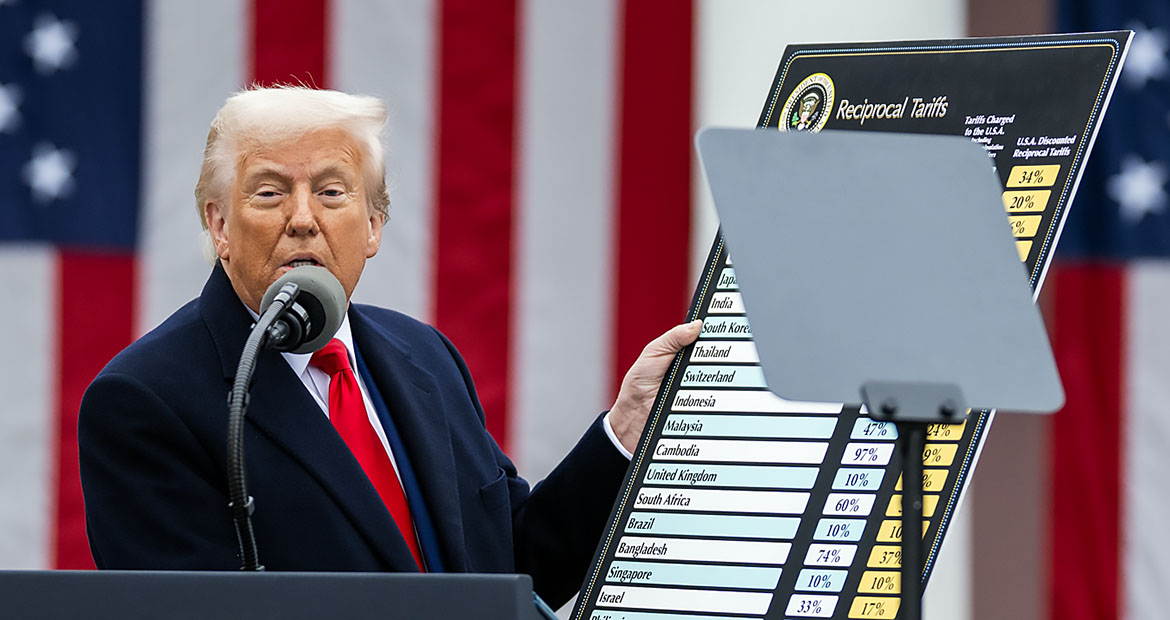Donald Trump’s tariffs are aimed at the EU and other countries because of the US foreign trade deficit, but a closer analysis shows that these measures are based on an outdated and one-sided view of the functioning of the economy and trade flows, resulting in a lose-lose strategy for the entire world economy.
By Hedi Bel Habib, independent commentator, PhD, researcher with long experience of analytical work in public administration of Sweden, including 15 years in the Government’s Cabinet Office
Trump’s tariffs are one-eyed measures
Trump’s tariffs are designed based on an analysis that focuses only on trade flows of goods. However, trade flows between countries consist of both goods and services. Eurostat data show that in 2023, the EU had a surplus of €157 billion in trade in goods with the United States. However, according to Eurostat data, the EU had a deficit of €109 billion in trade in services in 2023.
The figure below shows that the EU has a trade surplus in goods, while the United States has a surplus in services. The EU had a surplus of €48 billion in 2023, representing only 3% of the total trade flow of €1600 billion.
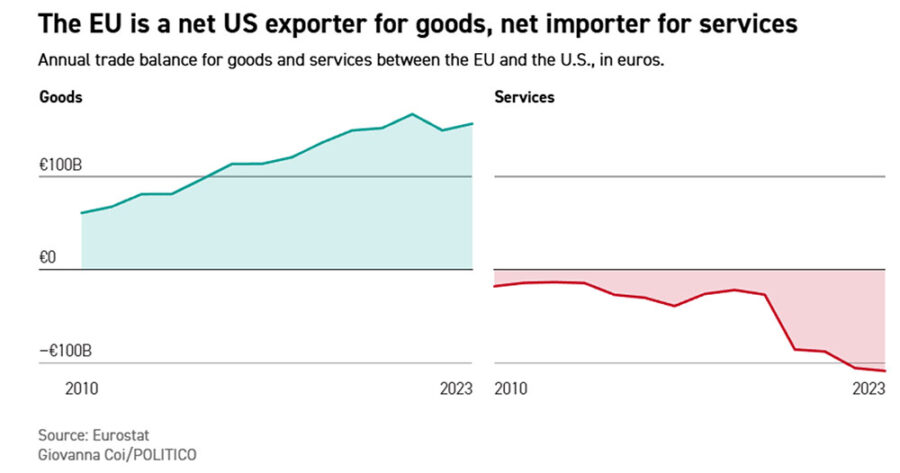
The US is a big winner as the EU moves towards a growing service economy
The economic importance of services has increased in the broader economy. Services now account for three-quarters of EU GDP, represent two-thirds of employment and create 9 out of 10 new jobs in the EU.
Studies have shown that services play a key role in productivity, competitiveness, and inclusive growth in the modern economy. They can also impact the manufacturing sector, which often uses services as inputs in production processes and sells products together with services.
Looking at the EU’s trade balance in services, we can see that the EU has the largest trade deficit with the United States in this sector. In 2022, this deficit reached almost €100 billion.
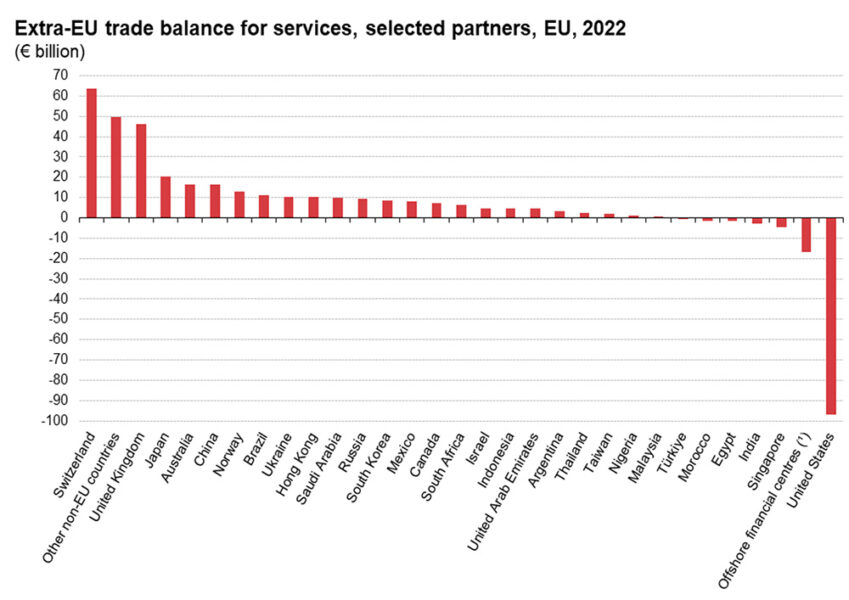
Counterproductive tariffs could deprive the US of its growing trade surpluses within the EU and the rest of the world
Trump’s tariff measures on trade in goods ignore the fact that the services sector is currently the backbone of the US economy. In 2021, the services sector accounted for 77% of US GDP.
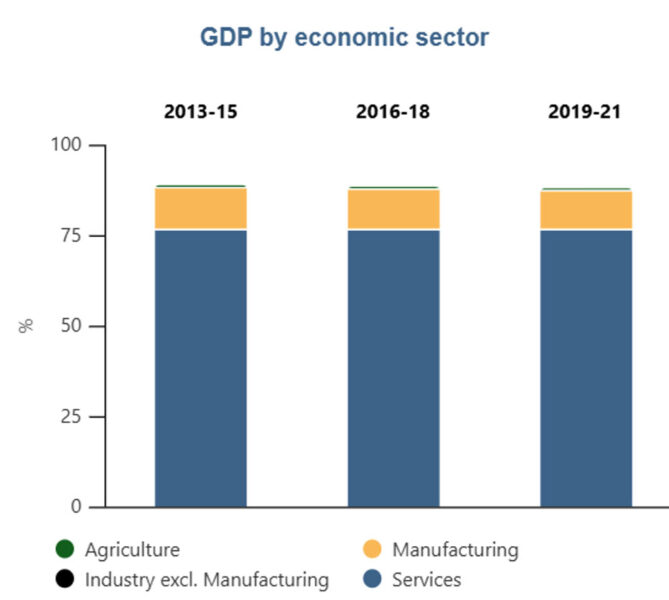
In 2023, US services exports amounted to $1026.6 billion, and US services imports were $748.2 billion. Today, the United States has a significant services trade surplus with Canada, China, Europe, and most other major economies.
These services are mainly dominated by world-class American companies such as Microsoft Corp, Google, Meta Platforms Inc, Amazon.com Inc, Tesla Inc, major banks, insurance companies, universities, healthcare providers, movie studios, and publishers. They can take many forms.
For example, Tesla makes money from licensing its intellectual property, while educating an international student is considered an export of a service.
Against this backdrop, creating tariff barriers in the shrinking manufacturing sector of the economy with a single-minded focus on trade in goods risks unnecessarily fueling inflation globally while destroying the US’s ever-growing trade surplus in services exports to the EU and the rest of the world. Therefore, Trump’s tariffs can be seen as a lose-lose strategy for the entire world economy.
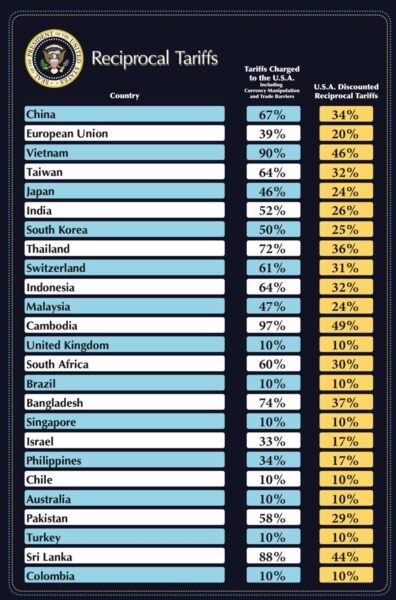
Related
- White House: Fact Sheet: President Donald J. Trump Declares National Emergency to Increase our Competitive Edge, Protect our Sovereignty, and Strengthen our National and Economic Security
- NewsVoice: Håller Trump på att utlösa ett finansiellt världskrig?

